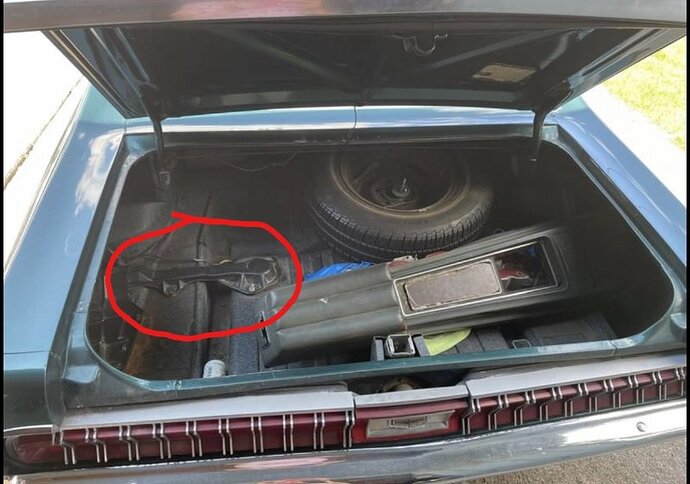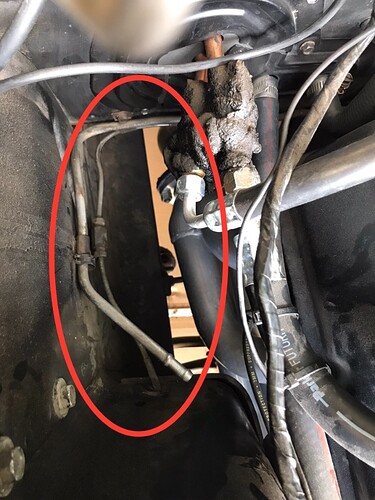I purchased a new vented gas cap one from mustang unlimited when they were open. I just got the car on the road and when I went to fill it up with gas, it was pressurized, like a gas can in the sun. So I went to NApa and got another one and the same thing is happening
Is this the way it is supposed to work?
Yes. Open it slowly. It lets air in not out.
So along those lines, letting air in and not out…
If a car has the California Evaporative Emissions system, shouldn’t that system vent the fumes out into the charcoal canister instead of letting the tank get pressurized?
…wondering if the vent valve for my system is working properly or not, or if I just don’t have a firm grasp of how the system is supposed to work ![]()
I also have a California Cougar. My understanding was always that the emissions system did the venting, allowing air in as the gas left the tank, as well as sending any fumes back to the charcoal canister and air cleaner to be burned.
When passing smog was no longer an issue, I took all that plumbing apart. But that created a venting issue, and unfortunately the tank on the Calif Cougar has a filler neck that is larger than most, so I never could find a venting gas cap. If you ever do find a cap that vents for that size filler neck, please let me know.
+1 on every sentence. Iwas told there are dual-venting caps, but I’ve yet to find one.
You all have 70s. OP has a 68 and no evap system.
I ran into an issue with my gas cap on my 1968 standard. The cap, which may will be original, caused my gas tank to collapse because nothing got in or out. What I did was to remove the cap and drill a very small hole, thinner then a tooth pick to ensure that there would never be any sort of deviation with the outside air pressure. I’ve had this for a while and haven’t encountered any leakage whatever even when parking on an incline.
I simply used the smallest thinnest drill bit that came with my Dremel tool.
First I had to use sure pressure to reverse the collapse of the tank. I did it like this. After I was done, a small dab of super glue covered up the hole even though it naturally closed on it’s own.
Here’s the previous situation.
I didn’t catch it on video unfortunately but you could really hear the tank snapping back into position like crimping a soda can in reverse. It has since maintained it’s form with no leaks or further drama.
A C6GY-9030-A gas cap Autolite # FC-30 is the correct cap I have used one for 14 years and never an issue.
Thank you
Yes. That is part of the California Evaporative Emissions system that was a “mandatory option” for 1970 models being sent to California.
That is part of the California Evaporative Emissions system that was a “mandatory option” for 1970 models being sent to California.
So I’m pretty sure my car’s PO replaced the fuel tank with a repro, as these components are gone. I traced what appeared to be metal fuel line on the passenger side of the engine bay - that isn’t connected to anything - back to an appliance mounted in the trunk on my driver side rear wheelwell. What was this line used for?
It was used for vapor recovery. If I recall it would have been attached to a Blue canister that has a 1 inch flexible tube going to your air cleaner housing. If the P.O. put in a new gas tank he may have removed some of the system. Does your tank have a fitting on the top going to the rest of that “appliance” mounted in your trunk?
Does your tank have a fitting on the top going to the rest of that “appliance” mounted in your trunk?
No. According to the PO’s folder of receipts, he purchased a new fuel tank and sending unit during his brief ownership. I’m sure he saw no reason to continue using the emissions system, but only removed the portions that were in his way and left the others. That recovery line to nowhere goes back down the firewall, into the transmission tunnel, along the rear frame rail, and through a grommet. I’ll probably get around to removing it after finishing more pressing projects.
I guess what brought me to this thread in the first place is trying to determine which gas cap I need - given that the original system is no longer installed, and I essentially have a non-Cali system, now.

